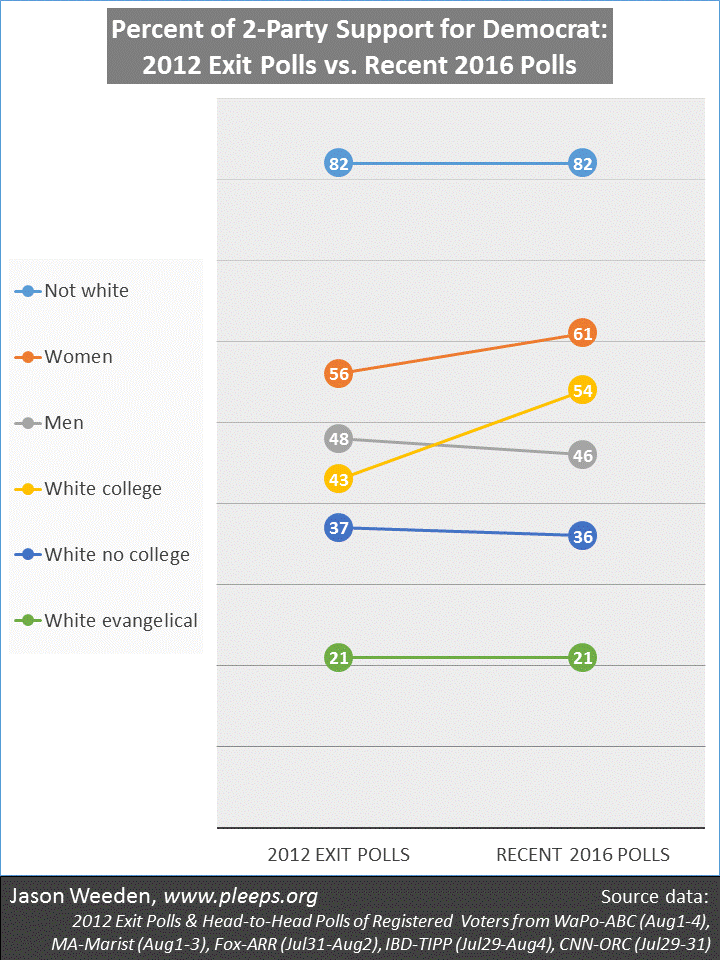A decent array of recent national polls have released various demographic splits. Each individual poll is typically too small to allow for reasonable estimates of particular groups—the samples usually contain around 900 registered voters—so detailed analyses based on single polls should be taken with a tablespoon of salt. But we’re now getting to the point where we can average across these polls to give a tentative analysis of how the demographics of the election this year are taking shape differently from the 2012 election.
The chart below shows my analysis of five polls fielded from July 29 to August 4. Some demographic categories were available from all five polls (women, men, and whites) while the others are from only three of the five. It’s not enough data to be highly confident in the numbers—here, take it with a teaspoon (rather than a tablespoon) of salt—but it’s something.
The big story is that whites with college degrees appear to be shifting rather dramatically. According to the 2012 exit polls, 43% of the two-party vote from college-educated whites went to Obama and 57% went to Romney. In the recent 2016 polls, in contrast, Clinton is gaining 54% of the two-party support from college-educated whites with 46% for Trump. Looked at another way, there was a 6-point gap between college whites and non-college whites in the 2012 exit polls, but in the recent 2016 polls that gap has tripled to 18 points.
 (Technical notes: The percentages from the 2012 exit polls are the percent voting for Obama divided by the percent voting for either Obama or Romney. The percentages from recent 2016 polls are based on head-to-head Clinton vs. Trump numbers from those registered to vote. Each 2016 poll was adjusted so that its results equated with the RealClearPolitics national average from Aug. 9. The 2016 percentages are the adjusted level of support for Clinton divided by the total adjusted support for either Clinton or Trump, averaged across available polls.)
(Technical notes: The percentages from the 2012 exit polls are the percent voting for Obama divided by the percent voting for either Obama or Romney. The percentages from recent 2016 polls are based on head-to-head Clinton vs. Trump numbers from those registered to vote. Each 2016 poll was adjusted so that its results equated with the RealClearPolitics national average from Aug. 9. The 2016 percentages are the adjusted level of support for Clinton divided by the total adjusted support for either Clinton or Trump, averaged across available polls.)
The demographic anchors of the two parties—non-whites on the Democratic side and white evangelicals on the Republican side—don’t appear to have shifted between 2012 and the recent 2016 polls. But we do see a widening gender gap from 8 points in 2012 to 15 points recently.
In sum, who are the folks driving Clinton’s rise? They’re people who roughly fit her own demographic: College-educated white women who aren’t evangelical Christians. Indeed, in our book, Kurzban and I gave the name “Hillarys” to a closely related demographic—high-education white women who are Christian but who don’t go to church weekly. So far, it looks like Hillarys might be taking the hill.
